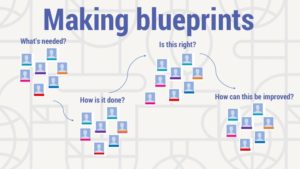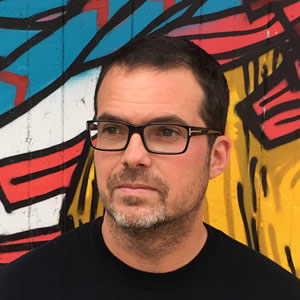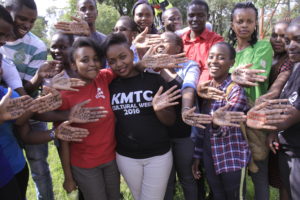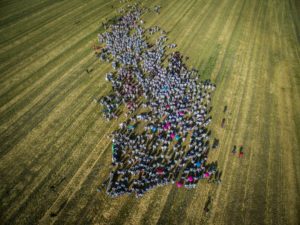Campaigners are known for two things. First, they are practical innovators, ready to use whatever strategies they can to get the job done. Second, they are notoriously overworked and overcommitted, meaning the valuable lessons that they learn by trying out new things aren’t often shared among their peers.
This represents a core challenge: If campaigners are already too busy, how do we get them to share their hard-earned know-how with each other?
Six months ago, the Blueprints for Change project launched with the goal of liberating valuable campaigner knowledge and making it open and accessible for progressive changemakers everywhere. In this short span of time, a committed group of volunteer helpers, myself included, has put together eight detailed how-to guides totalling well over a hundred pages, with information drawn from the collective experiences and collaborative voices of campaign thinkers and doers from around the world.
How did we get here? By building a network that made it easy to work together on collaborative documents, but more importantly by establishing a community and culture that made it rewarding to participate.
And though the system we created helps share knowledge among campaigners everywhere, the process that got us there could well be applied to building collaborative networks within and between organizations as well.

Getting the culture right
This project runs on the donated time and energy of our volunteer helpers, most of them busy campaigners themselves. Since this willingness to participate was our primary resource, we had to start by creating an internal culture where people would feel motivated to contribute.
To this end, the earliest stages of Blueprints for Change — well before any guides were made public — were spent collaboratively deliberating around a detailed “About doc” that laid out the project’s shared values, governance approaches and work processes for all to see. Key questions centered around how to make this project empowering and equitable for all involved and at the same time truly useful for the communities we wanted to serve.
This process involved many, many conversations. Though some of them were challenging, all of them were fruitful because the time we took as a group to get the DNA of the project right has paid off in terms of commitment and buy-in from our internal community of volunteers.
Consulting our core audience
We also tried from the beginning to establish a dialogue with our external audience, the campaigners out there with whom we wanted to share knowledge.
Starting with a pre-launch community drawn from our personal campaigner contacts, we invited this group to submit requests for guide topics through an open crowdsourcing process. We also continually reminded them that this is a collaborative project and that all guides are drafts that can be improved through their input.
Finally, to respect the privacy and safety of this campaigner community, we worked on and adopted a set of digital security principles to do what we could to protect the data of those who collaborated and made use of our resources.
Making collaboration happen at a (great) distance
The community of helpers that works together to make our guides is spread across four continents and six time zones. Most of us have never met face to face and yet, in a very real way, we feel connected as a community of practice serving campaigns that are fighting for similar things across the world.
To keep motivation and morale going, we get together on Zoom for group video calls when some of our schedules match up and check in with each other through Slack, which allows us to get each other’s messages in real time or when our time zones permit. Collaboration on these channels has already gone beyond the guides to include help on other research projects and job referrals as well.
The Blueprints for Change Network by the numbers
- 14 volunteer helpers based in Australia, Canada, Netherlands, Peru, U.K. and U.S.
- 30+ individuals and 12 organizations have shared content to help create guides
- 400+ campaigners on the crowdsourcing and feedback list
Then, there is the tricky work of working collaboratively to bring the guides together.
This process, which often involves two to three helpers working on a single draft, includes alignment on guide content and structure, several campaigner interviews, reviews and comments from still other campaigners, and then the integration of all that content from different sources into a clean structure that other campaigners will find easy to follow. It’s hard to imagine all of this happening without the the group-work capabilities of Google Docs and the ability to chat among authors via Zoom or Slack when needed.
Creating processes to guide collaboration
While all the collaboration outlined above may sound wonderful, it does not just happen on its own.
First, the group has a guiding process for choosing topics and writing up drafts that was defined in advance. This allows helpers to work independently for the most part without too much guesswork around content and expectations.
Second, regular supervision of the whole process by a bottom-liner is essential. The bottom-liner role involves check-ins with individual helpers, gentle nudges and an eye on draft progress and the availability of resources to keep this all moving forward. In this system, a bottom-liner’s steady presence on Slack and the Google Docs is needed week in and week out.
More helpers welcome!
One thing that has become clear over time is that the more people we have in our community of helpers, the more guides we are able to put out.
Blueprints for Change is on the lookout for progressive campaigners, organisers, thinkers, and doers who want to share their knowledge and experiences to help others. If this challenge inspires you and you would like to join our virtual gang on Slack and Google Docs, we will happily take any time you have to give us. Drop us a line to get started: blueprintsfc@gmail.com.
Featured image: Green rope meshwork. Photo by Clint Adair on Unsplash.




